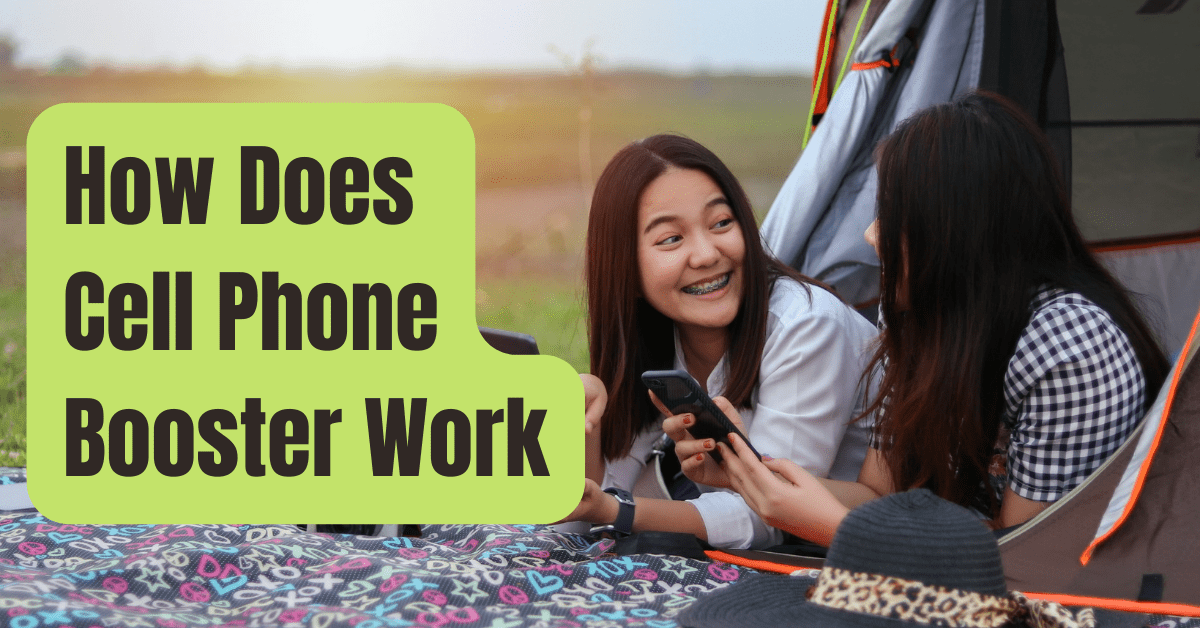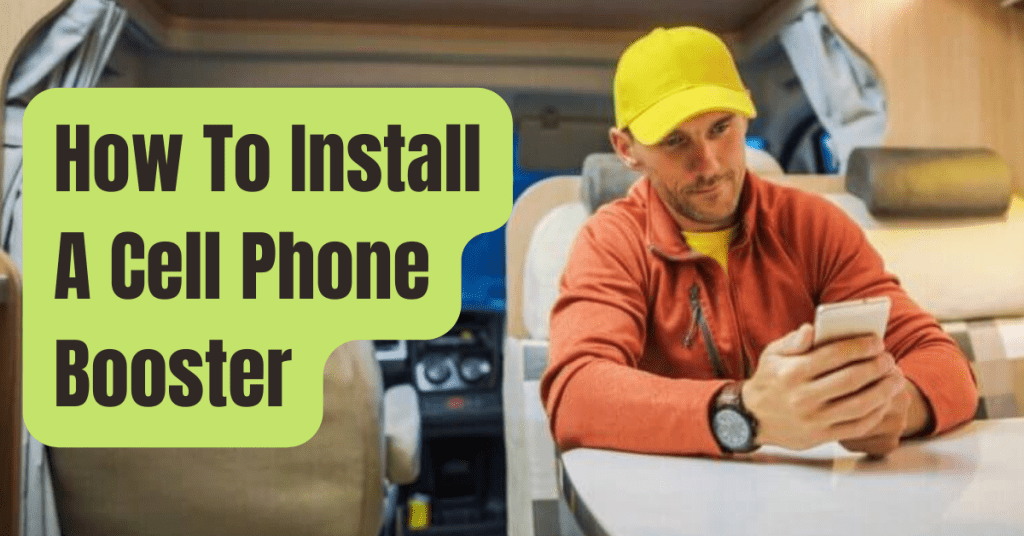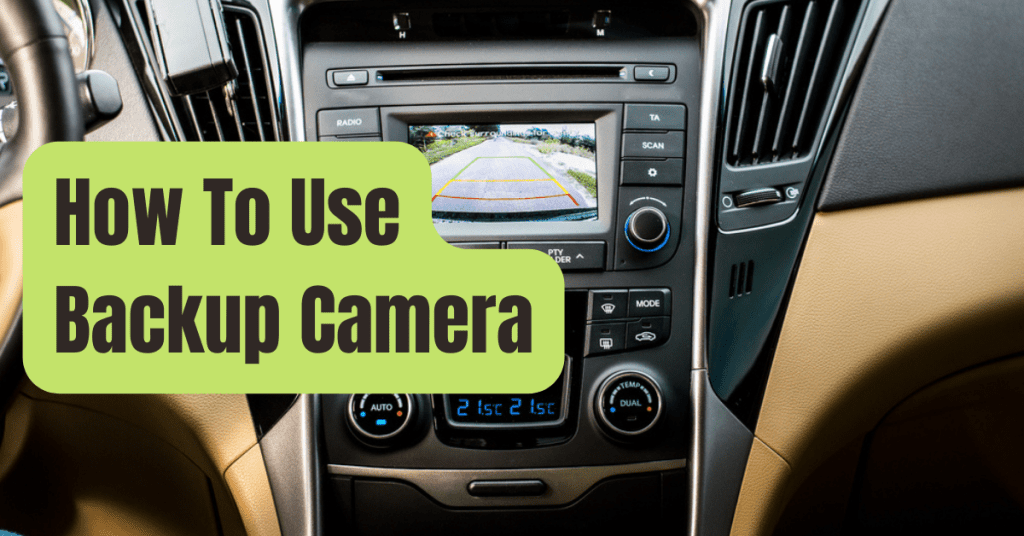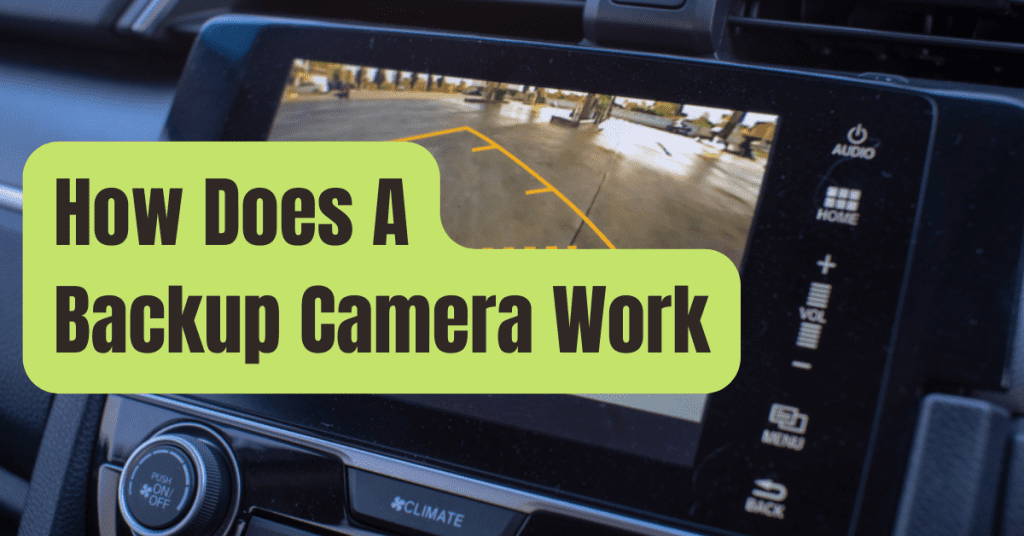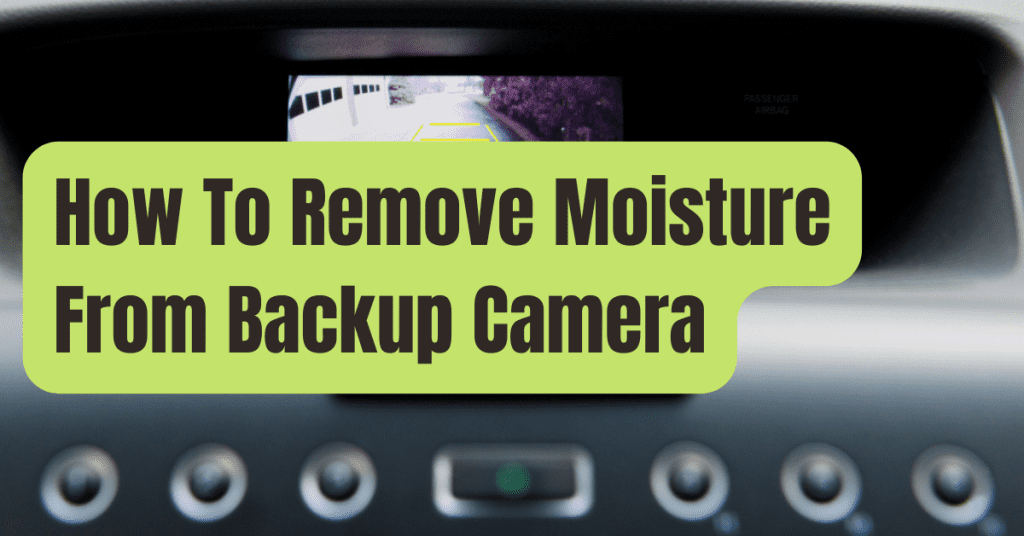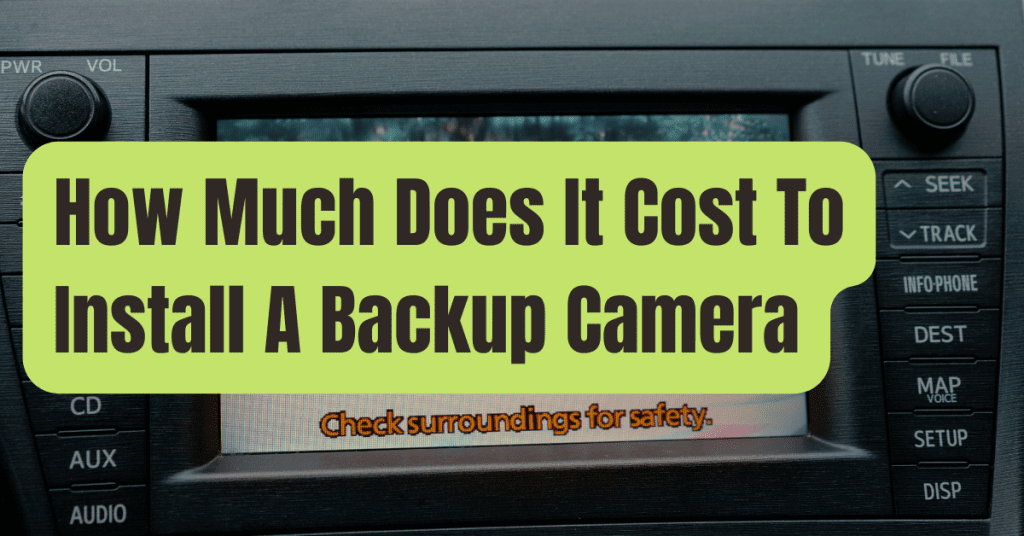What Is A Signal Booster, And How Does It Work?
Cell phone boosters are a developing sector that has seen a shift in popularity from rural to urban regions in recent years.
We hear queries about the capabilities and legal status of mobile phone signal boosters on a regular basis.
The anxiety is understandable, particularly with a technology that seems to be too wonderful to be true.
A cellular booster is a piece of electrical equipment that has been approved by the FCC and Industry Canada to enhance current 5G, 4G LTE, 3G, and 2G networks.
Boosters work with any 5G device, and some even increase the signal.
Signal boosters are essentially legal gadgets that can increase call quality, poor mobile signal, and internet speeds.
A cell booster can enhance your cell service and signal strength if you have a viable signal outside your house, car, or business building but a poor or no signal inside.
Many people are curious about how mobile signal boosters operate since they may eliminate lost calls, sluggish internet speeds, and unsent text messages without having to connect to WiFi, battle with your carrier, or transfer carriers.
We’ve got the answers!
What is the Function of a Signal Booster?
A cell booster (also known as a signal extender, signal amplifier, or mobile phone repeater) pulls in a poor outside signal, boosts it, and then rebroadcasts the enhanced signal to the targeted regions.
They may also function in reverse, receiving the signal from your phone and sending it back to the tower.
There are many types of boosters available, each addressing a distinct need:
- In-Building Signal Boosters – They are suitable for use in houses, offices, commercial buildings, and any other structure that requires signal.
- Vehicle Signal Boosters – Cars, trucks, RVs, SUVs, boats, and fleet vehicles are all eligible.
Remember that a cellular amplifier will only operate if there is already a signal outside your house, business, or car.
A cell signal booster boosts an existing signal rather than creating one.
The majority of signal booster kits are made up of three primary components:
- An External Antenna – The purpose of this device is to capture a weak mobile phone signal.
- An Amplifier – To improve a poor signal, this device is used.
- An Indoor Antenna – Inside your house, business, or automobile, it’s used to rebroadcast the enhanced signal.
The top three parts are connected by coax cables, which are intended to send high-frequency electrical impulses across long distances with little signal loss.
Antenna On The Outside
A mobile phone booster’s external antenna (also known as a donor antenna) is the first significant component.
They are able to catch a weak 5G, 4G LTE, or 3G signal.
Outside antennas are divided into two categories:
Omni-directional Antenna: This antenna receives signals from all directions or from a 360-degree angle.
They’re great for folks who have a medium to strong signal outdoors, or who live near many cell towers that can boost various carriers.
Uni-directional Antenna (the most common of which is a Yagi antenna): This triangle-shaped antenna draws signal at a 45-degree angle.
They’re made to point in the general direction of the closest tower.
The antenna may reach farther than an omni antenna because the signal is more concentrated.
A specific performance for signal degradation and those who simply wish to enhance a single carrier.
See our blog on Omni-Directional vs. Directional (Yagi) Antennas for additional information about donor antennas.
The antenna’s position is critical since it has a significant impact on the strength of the signal supplied to the amplifier.
Set up the antenna on the side of your house that receives the greatest signal.
You may use a variety of ways to locate the optimum signal location, including the amount of bars on your phone, smartphone applications, and field test mode.
To have a better line of sight with the mobile phone towers and reduce the amount of impediments between you and the towers, you’ll want to raise the antenna as high as feasible.
Generally, the taller the antenna, the greater the signal capture.
The exterior antenna is usually fixed on the house’s roof or fascia; you may utilize an existing vent pipe or a pole installation.
It’s critical that the exterior antenna be mounted on or near the roof’s edge.
If you have a yagi antenna, aim it away from your home toward the closest cell tower.
What if the exterior antenna can’t be installed on the roof? If mounting the antenna on the roof isn’t feasible, you may place it in the attic, on a wall, or in a window facing the mobile phone tower.
Keep in mind that the signal will be hindered by the additional impediments (building material, walls, windows, etc.) between the antenna and the tower while putting the outdoor antenna indoors.
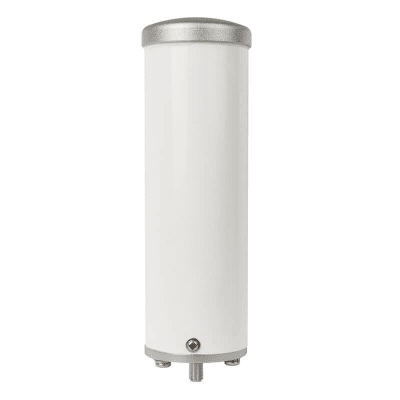
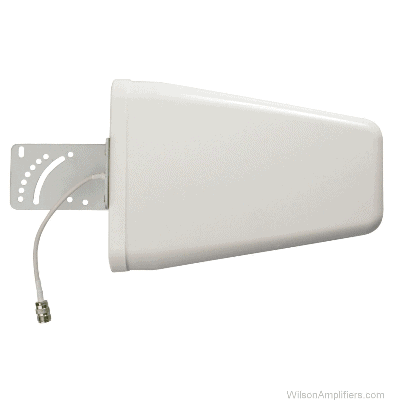
External Antennas for Vehicles
The majority of car antennas are omni-directional, which means they perform best while the vehicle is moving.
Outside antennas are simple to install on vehicles such as cars, trucks, and SUVs.
The majority of external antennas are magnetic, and you just attach them on the top of your vehicle to pick up the faint signal.
Magnetic antennas are simple to reposition in order to increase performance.
Other antennas, on the other hand, are more permanent and are intended for big vehicles such as RVs, fleets, delivery trucks, and so on.
The majority of these antennas include a spring (seen above) that allows them to resist collisions.
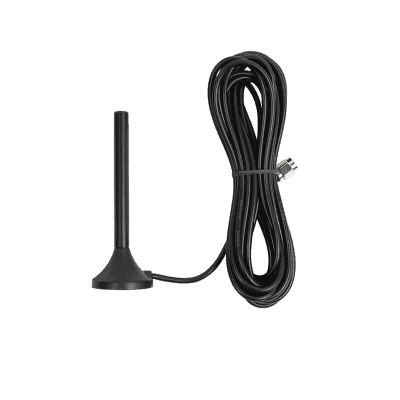
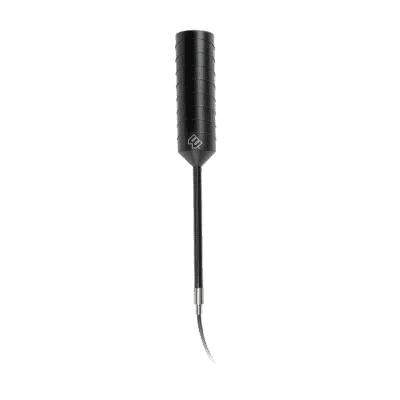
Amplifier
A mobile signal booster’s amplifier is the second most important component.
After the weak signal from the outside antenna is brought in, it is routed to the amplifier for boosting.
You’ll need to be acquainted with a few words to understand how amplifiers function and how to buy the ideal booster kit.

Area of Coverage
Amplifiers come in a range of sizes, each with a different number of square feet they can cover.
Small-home amplifiers may cover up to 2,500 square feet, while medium- to large-home amplifiers can cover anywhere from 5,000 to 7,500 square feet.
Business amplifiers that can cover areas up to 100,000 sq ft are available for commercial buildings.
Keep in mind that the coverage area is affected by the quality of your outside signal and the kind of amplifier you choose.
Take, for example, the weBoost Home MultiRoom Signal Booster Kit.
Under ideal circumstances, this home booster may expand cellular coverage up to 5,000 square feet.
That means, there is a decent signal outside and no impediments that are interfering with it.
However, real-world data reveal that a covering area of 2,000-3,000 sq ft may be expected.
The coverage range of these amplifiers is indicated by titles such as “House MultiRoom” or “Home Complete,” with the Home MultiRoom covering many rooms and the Home Complete covering a typical home with no problems.
Strengthening
When comparing signal boosters, the words dB (decibels) and dBm (decibels per meter) will appear (decibel-milliwatts).
What exactly do they imply?
Cell phone transmissions are radio waves that operate within a certain frequency range of the electromagnetic spectrum.
The signal may be measured in decibels (dB) or decibels per meter (dBm).
The radio waves are measured in decibels (dB), which are used to assess an increase or decrease in signal intensity (gain or loss).
The decibel-milliwatts (dBm) scale is used to indicate how much power the amplifier can produce or how much power your mobile devices get.
The strength of the cellular network is represented by the bars on your phone.
Cell phone signal levels may vary from -50 dBm to -120 dBm in general.
-50 dBm denotes full bars, whereas -120 dBm denotes a dead zone.
All amplifiers are evaluated using dB outputs, which represent the amplifier’s maximum gain.
An amplifier raises your dB (signal gain) to get you closer to the -50 dBm range.
If your signal is -110 dBm and your amplifier’s maximum gain is +50 dB, your signal will be close to -60 dBm (-100+50=-60).
A decent home amplifier should have a gain of at least +60 dB.
The most powerful devices have a gain of +70 dB.
A decent automobile amplifier should have at least +25 dB of gain, with the greatest models reaching +50 dB of gain.
It’s vital to remember that although the amplifier can increase a signal up to its dB value, it can’t promise that it will do so instantly.
Because there are so many variables to consider, such as distance from the cell tower, outside interference, interior interference, building material, and so on, the findings may be influenced.
As a consequence, it’s critical to first determine your dBm readings and consult with a licensed signal booster specialist in order to attain the desired and realistic results.
(Hey, we’re signal booster specialists; if you have any questions, contact us at [email protected].) Also, if you have any cronut recipes, please post them.)
Antenna for Indoor Use
The third significant component of a cell booster is the inner antenna.
After the signal has been amplified, it is sent to the inside antenna, which rebroadcasts it to the appropriate places.
Indoor antennas are divided into two categories:
Panel Antenna: This antenna (seen above) is usually wall-mounted and has a signal cone of 45-70 degrees, which means the strongest signal will be given to the regions nearest to it.
Placing the panel antenna in a specific section of your house, such as a single office, home office (SOHO), living room, or bedroom, will offer that area the greatest signal before broadcasting the signal to lower priority areas.
Dome Antenna: This antenna is usually installed on the ceiling and distributes the signal evenly in all directions or at a 360-degree angle. When attempting to increase the signal in a big region, they will work best.
Panel antennas are used in the majority of Wilson Electronics’ weBoost signal enhancers. However, some manufacturers favor one kind of indoor antenna over another, depending on your mobile phone booster system kit.
Make sure the spacing between the outside and inside antennas is at least 20 feet vertical or 50 feet horizontal when installing the interior antenna. This will keep your signal booster from oscillating, which will cause it to shut off.
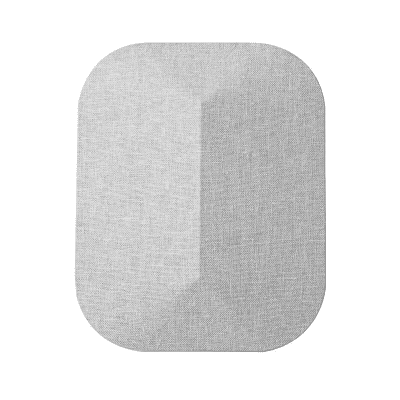
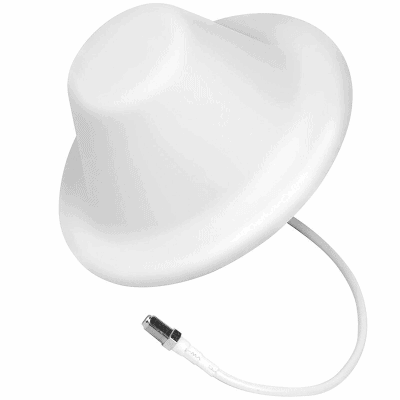
Indoor Antenna for a Vehicle
Vehicle antennas are divided into two categories:
Cradle Antenna: These antennas are best used by a single person. The cradle is attached to a tiny amplifier, which will deliver the whole booster signal to the cradle’s gadget. Because of this antenna, the smartphone must be kept in the cradle at all times.
Low Profile Antenna (image above): The most popular antennas used in car signal boosters are these. They are simple to install; just set the antenna on the dashboard or a seat, vertically or horizontally (usually Velcroed). Low-profile antennas are omni-directional, which means they can broadcast and receive signals in all directions.
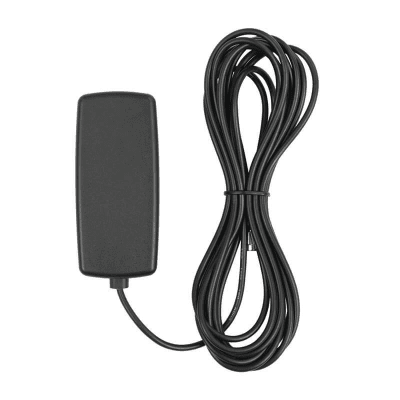
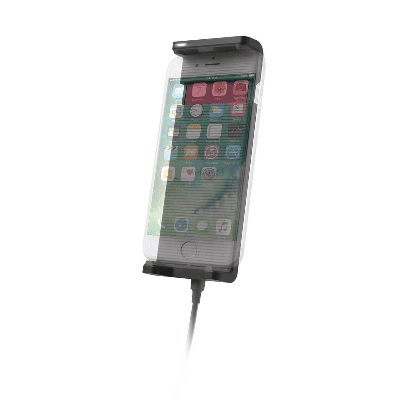
What Are the Advantages and Disadvantages of a Signal Booster?
Check out our entire post on the advantages of a signal booster for a more detailed explanation, but in a nutshell:
Pros:
- Cell phone boosters may totally rock with “sufficiently” bad 3G & 4G signal. Take a look at some of the feedback we’ve received from customers who have used our services and products.
- Dropped calls, poor call quality, delayed text messages, sluggish internet connections, and poor reception are all things that should be avoided.
- There are no recurring costs since this is a one-time purchase.
- Most signal boosters from respectable manufacturers come with a standard two- to three-year guarantee.
- Technical assistance for the rest of your life.
- All cellular devices are compatible (iPhones, Android, tablets, hotspots, notebooks, etc.)
- Collaboration with all major carriers in the United States and Canada (AT&T, Verizon, T-Mobile, Sprint, Bell, Rogers, Telus, etc.).
- 30-day money-back guarantee if you don’t get a stronger signal, as well as lifelong technical assistance.
Cons:
- Installation requires a certain amount of dexterity. There isn’t much, but there is some.
- If you reside in a dead zone, you may need to compensate by purchasing a more powerful and pricier device.
- You may utilize WiFi calling or have your carrier give you a free femtocell (microcell) if you already have landline WiFi internet. This essentially transforms a WiFi signal into a cellphone signal.
Cell Signal Boosters: What Are They and How Do They Work?
Boosters For Analog Signals
Analog cellular signal boosters are the most frequent nowadays.
These amplifiers operate with all major mobile phone service providers and boost all sorts of cellular signals across all bands.
Wideband cellular repeaters, cellular amplifiers, bi-directional amplifiers (BDAs), and, of course, signal boosters are all terms used to describe these devices.
Just keep in mind that they’re all talking about the same issue.
All of the signal boosters made by WeBoost are analog.
Boosters for Smart Signals
These are a more recent form of booster that is set to a certain frequency.
These may be programmed and are typically extremely sophisticated.
Smart boosters may amplify signal by up to 100 decibels.
Some Wilson Pro signal boosters are said to be “smart.”
Home Signal Boosters We Recommend
Popular Midsize House Signal Booster
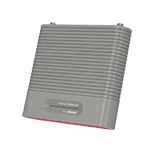
weBoost Home MultiRoom – 470144
For medium-sized houses and workplaces with a strong outside signal, as well as tiny residences with a poor signal.
- Under ideal circumstances, you can get up to 5,000 square feet of coverage.
- With 21 dBm uplink and 12 dBm downlink, the gain may reach +65 dB.
- Several attachments are available for optimum coverage and personalization (sold separately)
- For all carriers and many devices, complete coverage for various rooms or a midsize house is available.
- With a beautiful fabric front with an outside yagi antenna and an interior panel antenna arrangement
For good reason, the weBoost Home MultiRoom is the most popular signal amplifier.
With a covering range that generally works for most individuals, it hits the sweet spot of pricing, attractiveness, and efficiency.
It has a maximum uplink strength of 21 dBm, which means it can connect with far-away towers to give better cellular service.
This makes it an excellent choice for city dwellers as well as those who live in rural regions where tower distance is a major issue.
Depending on the strength of your outside signal, you might anticipate numerous rooms of coverage or perhaps whole-home coverage.
The House MultiRoom may cover spaces up to 5,000 sq ft if you have a great cellular connection outside your home, but most people will receive between 2,000 and 3,000 sq ft of internal coverage, and regions with severely bad cellular service can anticipate significantly less coverage.
If you live in an area where there is little or no signal, or if you want a stable connection throughout your big house, try the weBoost Home Complete, which is a higher-grade signal booster.
Home Signal Booster Installed by a Professional

weBoost Installed Home Complete – 474445
For big houses with a strong outside signal or medium homes with a poor outside signal, whole-home service is available.
- For your whole house, you’ll have superior mobile phone service. Ready for 5G
- Under ideal circumstances, up to 7,500 sq. ft. of coverage may be achieved.
- With 24 dBm uplink and 12 dBm downlink, the gain may reach +72 dB.
- Several attachments are available for optimum coverage and personalization (sold separately)
- For all carriers and many devices, complete coverage for the whole house is available.
- Indoor and outdoor yagi antennas, each with a beautiful fabric front
The most powerful home booster available is the weBoost Installed Home Complete.
It may cover a big property with a strong outside signal or a medium home with a poor outside signal.
It has the greatest maximum gain of any multi-carrier home device at +72 dB, making it about 3 times more powerful than the weBoost Home MultiRoom.
The Installed Home Complete can also reach far-flung towers with its strong uplink and downlink outputs, providing you with superb interior service.
The Installed Home Complete may cover up to 7,500 square feet under ideal circumstances.
Most individuals will receive between 4,000 and 6,000 sq ft, depending on their outside signal strength; outlying zones should anticipate a bit less.
Additional antennas are necessary to enhance coverage, particularly if you’re attempting to cover more than one storey.
Not to add, it has an attractive style that will complement rather than detract from your home’s decor.
The weBoost Installed Home Complete’s main feature is that it includes a professional home installation.
You won’t have to worry about installing the signal booster yourself or figuring out where the optimal placement for the signal booster is since it will be handled by specialists.
If you want to install the booster yourself, we also have a Do-It-Yourself version available.
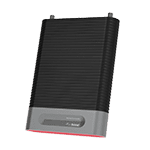
weBoost Home Complete – 470145
For huge households, make your own booster.
One or Two-Room Signal Booster
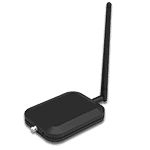
weBoost Home Studio – 470166
For all carriers in small homes and offices.
- Booster for 5G networks – amplifies 4G LTE and 3G transmissions.
- Under ideal circumstances, you can get up to 2,000 square feet of coverage.
- Gain of up to +60 dB
- Design is compact and may be used on any flat surface.
The weBoost Home Studio is the newest and most cheap home signal booster on the market, capable of boosting multiple cellular devices across all US carriers.
Ideal for those on a tight budget who wish to increase their cellular coverage in tight spaces.
A Yagi antenna and an amplifier with a connected antenna are included in the package.
Its small form makes installation fast and simple.
The amplifier may be set up on a table, tabletop, bookshelf, or any other flat surface.
They can boost your cellular signal in spaces up to 2,000 square feet under optimum circumstances, making them suitable for a modest house, apartment, dorm, or condo.
Coverage, on the other hand, is governed by the strength or weakness of your outside signal.
Weak signal regions will most likely get 200-500 square feet, which is adequate to fill one big room, such as a living room, home office, or master bedroom, or two small rooms.
If you have a good outside signal but have trouble getting a stable connection in the rooms where it counts, this is a great beginner package.
However, if you reside in an area with poor signal, you may consider upgrading to the weBoost Home MultiRoom.
Vehicle Signal Boosters We Recommend
Vehicle Signal Booster with Multiple Users
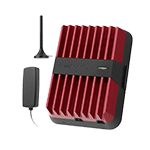
weBoost Drive Reach – 470154
For drivers in both rural and urban settings.
- 5G Ready Boosts Talk, Text, and 3G & 4G LTE Data
- Multiple cellular devices are amplified across all carriers.
- Gain of up to 50 decibels
- Works in very rural and isolated places.
- Extremely adaptable, with versions for any vehicle and circumstance
The weBoost Drive Reach is the most powerful vehicle cell signal repeater on the market, capable of boosting up to four cellular devices on any carrier.
For the most part, it’s the booster we suggest.
The signals are picked up by a small magnet mount exterior antenna, and the signal is disseminated inside your car by a low-profile inside antenna (typically Velcroed to a seat).
To benefit from the increased signal, your cellular device must be within an arm’s length of the inside antenna, so it’s ideal for a conventional car, truck, or SUV, but it can work with any vehicle.
It has the largest uplink output power of any multi-carrier vehicle booster, enabling it to reach cell towers 2x farther for double the signal strength, making it much more powerful than its rivals and a terrific performer even on the most remote of roads and highways.
Consider the weBoost Drive Reach OTR if you need a signal booster that is best suited for large trucks and fleet vehicles and can handle multiple users.
Signal Booster with the Best Price
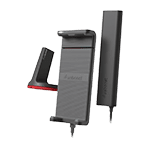
weBoost Drive Sleek – 470135
Best for driving in cities and suburbs.
- Voice, text messages, 4G, LTE, and 3G data are all improved. Ready for 5G.
- For only one smartphone
- Booster for cradle signals
- Gain of up to +23 dB
The weBoost Drive Sleek is the most cost-effective single-device car cellular amplifier.
A magnet mount antenna that can be readily mounted on the top of any car, as well as an adjustable cradle vent mount that can accommodate any size smartphone or small tablet, are included in the package.
Your cellular device must be in the cradle to benefit from the improved signal.
It truly shines for normal conversation, text, and hands-free navigation when linked with a Bluetooth headset.
Upgrade to the weBoost Drive Reach if you have severe cellular reception issues.
Consider the weBoost Drive Sleek OTR if you need a signal user signal booster that is suited for huge trucks and fleet cars.
RVs, Trailers, And Campers May Benefit From A Powerful Cell Signal Booster.

weBoost Drive X RV – 471410
For RVs that are both moving and parked.
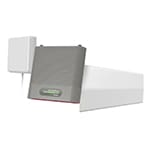
470159 – weBoost Destination RV
For RVs, campers, and trailers that are permanently parked.
- Increases voice, text, 3G, and 4G LTE internet speeds
- Ready for 5G
- Multiple cellular devices may be amplified at the same time (up to 4)
- Gain of up to 50 decibels
- Compatible with all cellular devices and carriers (Verizon, AT&T, T-Mobile, Sprint, US Cellular, and more)
For RVs, trailers, and campers, the weBoost Drive X RV is an excellent multi-user vehicle booster.
It may be used both while traveling and when stopped at a campground, requiring just one simple setup.
For enhanced coverage when moving, this kit combines the weBoost Drive X with the best-in-class indoor and outdoor OTR (over-the-road) antennas.
It’s ideal for Class B campers since it should cover the majority of the inside area while increasing signal for up to four phones, but it can also be used in Class A, Class C, and towable trailers.
Keep in mind that where you install the inside antenna, whether it’s in the living room or the driver’s seat, might affect which regions are enhanced.
Depending on the strength of your outside signal, the Drive X RV may give coverage up to 10 feet from the interior antenna.
If you spend the most of your time in one place, the weBoost Destination RV is a better option than the Drive X while stationary.
FAQs
Is it allowed to use signal boosters?
Wilson Amplifiers sells only FCC-certified signal boosters, which means they are pre-approved and fully legal.
There are a lot of bad signal boosters on the market, such as the cheapo ones you could get on Amazon or eBay – these aren’t legal and might cause problems with your cellular network.
Is it true that mobile phone boosters work?
They do, in fact.
Cell phone boosters, on the other hand, can only amplify a poor cellular 4G, LTE, or 3G signal.
They CAN’T CREATE a cellular signal, nor can they amplify a WiFi signal on a landline (the Uverse, Time Warner kind).
With this simple guide to mobile phone signal strength, you can figure out how much “bad” cellular service you need to improve.
Is it compatible with my network carrier?
Cell phone boosters that have been approved by the FCC and the IC work with all major and local carriers in the United States and Canada.
The sole exception would be a specific Sprint frequency utilized in a few relatively small areas (extremely rare).
All of my cellphone service is provided by a single provider. Can you recommend any nice single-carrier amplifiers?
Single-carrier amplifiers were formerly more prevalent, but FCC rules forced the most respectable cell booster manufacturers to stop producing them.
Due to a complicated installation procedure and lack of dependability, the ones presently on the market have received bad consumer reviews.
They’re also not future-proof if you switch carriers every four years, like the typical American does.
As a result, we do not have them at this moment.
Is it necessary for me to have an internet connection in order for things to work?
No, they don’t need WiFi or a telephone connection to function.
They just increase cellular signal strength.
Is it necessary for me to connect my phone to a mobile phone booster?
Nope! The amplified signal will instantly be picked up by your phone.
To connect to the booster, you don’t need to go through your settings.
Even better, no password is necessary (which is one less password to remember).
Furthermore, any device that is inside the signal booster’s coverage area will get an immediate bump in signal strength.
Is it okay if I use my booster outside?
“Why can’t I put my signal booster outside?” many of our users wonder.
“Is there an outside signal booster?” some inquire.
Signal enhancers, however, only function in confined environments.
This is because the signal may “bounce” around an area, but there are no barriers for bouncing when the space is outside.
A power source is also required for cell phone boosters.
While having a battery backup would definitely address the problem, the FCC forbids it…so there’s not much that can be done.
In addition to having less efficient performance than in-building signal boosters, carriers do not want signal boosters redistributing signal outdoors.
The amount of noise this may introduce into the network can create problems for nearby cell towers, thus it should be avoided.
If you reside in a rural region where several people use the same tower, this might have a detrimental impact on everyone’s coverage.
Signal boosters won’t function outside for a variety of reasons, including power difficulties, efficacy, and legal considerations, but they perform well indoors.
Get your mobile phone signal enhanced inside if you need it in your location.
Is it possible to use this while hiking?
Unfortunately, no current amplifiers are fitted with a battery as required by FCC standards – but even if they were, you wouldn’t notice much of a difference since boosters are meant to be utilized in restricted spaces.
Will my neighbor be able to take advantage of my improved signal?
Nope.
Your amplified signal is limited to the area where you placed it.
Your neighbor, on the other hand, will get a stronger signal if they visit your house.
Is this compatible with my solar panels?
Because it needs a certain power and voltage, a signal booster cannot be used directly with a solar panel.
However, if a solar panel is your primary source of electricity, you may utilize it with it.
The booster receives a cell tower signal, amplifies it, and broadcasts it again. How does the phone know which signal to react to (tower or booster)?
It will cling to the most powerful source.
Because the booster is closer, it will draw signal from the booster.
Why do mobile phone signal boosters come in a package?
The Federal Communications Commission (FCC) enacted a new rule in 2013 requiring all mobile phone signal boosters to be approved with better designs to prevent interfering with carrier networks.
Some unregulated third-party boosters caused many interference to carrier cell towers in the wild west days of mobile phone boosters, resulting in tower overcrowding, network shutdowns, and other severe performance concerns.
Because of a few of these bad apples, major carriers (AT&T, Verizon, T-mobile, and Sprint) and reputable signal booster manufacturers demanded stricter regulations and accountability, resulting in the creation of a standard for 4G LTE and 3G signal boosters and the development of better-performing and carrier-compliant boosters.
With the launch of 5G, this trend has continued.
As a result, starting in 2013, all mobile phone signal boosters were required to be FCC-certified.
As a consequence, amplifiers are not available for purchase individually.
Because all three key components (amplifier, inner antenna, and outside antenna) are considered one unit only granted authorization by the FCC as a whole, pieces cannot be switched in and out, mixed and matched.
This is why merchants and online vendors can’t just sell you an amplifier since the FCC only approves the full system, not individual pieces, notably the amplifier.
Customers may still buy extra antennas, splitters, and other equipment to customize their coverage.
Is it true that the boosters are waterproof?
Although the outside antennas are waterproof, the amplifiers are meant to be installed in a moisture-controlled environment, thus no.
Is it compatible with the device I’m using?
Yes, since mobile phone repeaters are intended to work with all cellular devices.
Your hotspots and other similar devices are also protected.
Is it a WiFi booster?
Not directly, however if you get a 4G booster, you should see a significant increase in data speeds.
It won’t enhance WiFi on other devices directly, but it may be able to do so indirectly via a jetpack or hotspot.
Are they ready for 5G?
Yes.

